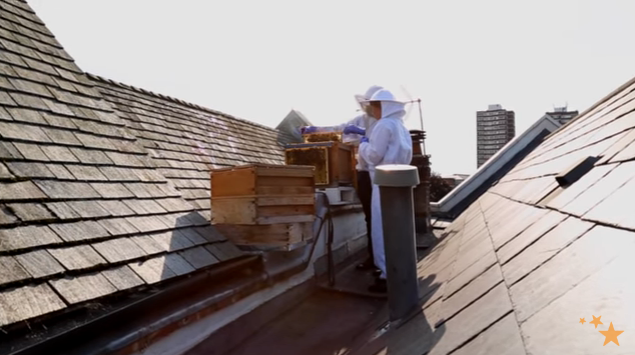Family-run businesses are thriving, boasting superior growth and profitability than non-family run companies.
It’s encouraging news for the UK’s 4.8 million-strong family-owned contingent. In 2017 alone, family-owned companies generated 34 per cent greater cash flow returns on investment than their non-family owned counterparts, finds a survey by Credit Suisse Research Institute (CSRI).
The CSRI analysed its database of over 1,000 family-owned, publicly-listed companies ranging in size, sector and region looking at their performance over ten years compared to the financial and share price performance of a control group consisting of more than 7,000 non-family owned companies globally.
According to the report:
- Family-run businesses boast superior growth and profitability. The financial performance of family-owned companies is superior to that of non-family-owned businesses. Revenue growth is stronger, EBITDA margins are higher, cash flow returns are better and gearing is lower.
- Family-owned companies have a longer-term and conservative focus. The family-owned companies included in the survey show a strong preference for conservative growth. The average family-owned company relies less on debt funding than the average non-family owned company.
- Periods of underperformance are not related to macro conditions. While there does not appear to be a strong relationship between macro conditions or general equity market sentiment and relative returns from family-owned companies, periods of rapidly-improving economic conditions tend to coincide more frequently with weaker relative returns for family-owned companies.
- Succession risk may be overstated. The report shows that first and second generation family-owned companies generate higher risk-adjusted returns than older peers during the past ten years.
Eugène Klerk, head analyst of thematic investments at Credit Suisse and the report’s lead author says, ‘This year we find family-owned businesses are continuing to outperform their peers in every region, every sector, whatever their size.
‘We believe this is down to the longer-term outlook of family-owned businesses relying less on external funding and investing more in research and development.’
But how do you effectively run a family business at the coalface? Here, we provide some first-hand advice from those in the know.
How to run a family business: Paul Wilcox, CEO, Wilcox Limousines

Paul Wilcox, of third generation family-owned Wilcox Limousines, says that the most important aspects of running a family business are ethos, balance and innovation.
‘At our company, the ethos – excellence, experience and elegance – is the essence of our brand. These values have been instrumental in crafting our sense of identity and our sense of purpose.
‘I’m proud to say that, as a third-generation family-owned company, we still work to the traditional values established by my father, William Wilcox, when he first opened our doors for business in 1948.’
These values are reflected in everything that the company does, in every vehicle that is built. ‘They are standards with which we’ve long been associated, with which we’ve become synonymous. And standards of which we are rightfully proud and which we all work very hard to maintain.’
“Too often family-owned businesses become inward looking and complacent”
Indeed, a defined set of family values can also prove to be very productive in business, when it comes to structure, setting the standard to which to adhere and are solid foundations by which to organise the business around.
‘In practical terms, they also help to inform the way the business is managed, the way in which family members interact with each other and they also influence the making of important decisions,’ Wilcox says.
The balance of a family business
Another important aspect to establish when working with family is the work-life balance.
This is something that is very hard to achieve, for almost all business owners; but it’s ever harder when working with family, and yet even more crucial.
‘There need to be boundaries in place,’ Wilcox says. ‘It can prove difficult, but you need to make sure that business doesn’t spill over into family time. It’s a balancing act, and it is one that can prove incredibly challenging to strike. But you must try, as best you can, to leave business in the office – which is easier said than done when your colleagues are your nearest and dearest.’
>See more on family businesses
Wilcox works closely with his daughter, Leila, who is head of marketing and business development, and his nephew Louis, the sales director.
‘I can’t imagine wanting to work with anyone else other than my family. We have a very good working relationship, trust one another implicitly and run a thriving business.
‘However, a lot of what makes our working dynamic such a success is how well we manage the transition from office life to home life. I’d be lying if I said business was never discussed outside of the office, of course, it finds its way into our conversations – but we are quick to draw the line. It is absolutely crucial, if you want your business to succeed, that you find a work-life balance that works for you and members of your family.’
Too often family-owned businesses – and businesses in general – become inward looking and complacent – so constant innovation is key for these organisations.
Finding new ways to innovate in a family business
As a company, Wilcox Limousines is continually looking to push the envelope and find new ways to innovate and improve its vehicles and add fresh impetus to the coachbuilding industry, looking to blend its traditional coachbuilding experience with modern techniques to create truly unique vehicles.
As an example of the company’s commitment to innovation, Wilcox mentions the company’s design and handbuilding of reportedly the world’s fastest limousine, modelled from the Jaguar XJR.
‘It was an opportunity for us to create something new and unique. The finished product was a feat of engineering. A testament to our dedicated team of engineers, combining extraordinary design with intuitive modern technology.’
In 2016, the company again found new and exciting ways in which to create new products that incorporated modern design features, such as the glass roof option introduced for a Jaguar hearse. ‘The hearse itself was constructed using techniques more commonly associated with the aircraft and aviation industry – further proof of our dedication to continually improve the process by which we design and build our vehicles,’ Wilcox says.
So, what effect does continually striving to improve and innovate have on a business? Well, Wilcox says last year was the best on record in the firm’s 69-year history. ‘We managed to not only bring new and exciting products to both the domestic and international markets, but oversee a rise in sales of our market-leading Jaguar hearses, as well as sales of our more traditional models.’
Wilcox says that almost all businesses begin life as family businesses, but only a select few are capable of stepping up to the challenges that this form of ownership presents and prospering.
‘It takes a serious and committed effort from all involved. To make a family business a success you need a strong ethos, an established balance and a desire to continually innovate and challenge the marketplace.
‘As a third-generation family-owned business – one that is fast approaching its 70th birthday – I’m very proud to say we’re not only still going strong, but getting stronger.’
David Ingram, managing director of Bring Digital, discusses the challenges of running a family business in the marketing sector.

When I started Bring Digital with my wife Susie six years ago, one of the things we were always sure of is that it would be a company built around our family values. We even named Bring after our daughter, Bonnie Rose Ingram.
It’s a business that started in the back bedroom of our home in 2012 with a dream to be a down-to-earth digital marketing agency that could be transparent and genuinely helpful for businesses that had been burned by agencies in the past.
Since then, Bring Digital has grown into a 30+ person operation that has worked with some massive UK brands. We’ve expanded from our original single service offering – SEO – to being able to provide a full-scale digital marketing solution, offering web design and development services, PPC management, content marketing, digital PR and we’ve recently added affiliates marketing and analytics into the mix.
Despite that massive growth in such a short period, we always aspire to get back to those values that are at the centre of what we do. I think it helps that Susie and I are still heavily involved in the business; it helps us set the tempo that others can follow. We embody that family business attitude not just in the perks that we offer like flexible working hours and ‘work from home’ days but also in the relationships we’re purposefully building with one another.
Managing staff with families
We understand the kind of pressures that our staff are under when they have young families of their own to think about – we’re in that same position ourselves. It goes beyond offering cool perks; we know that the Bring family needs to be a support network, the kind that lets people put their families first. That’s why we invest time and money into making sure our team get to go out and spend time together outside of work. Those organic relationships pay huge dividends in the long run; it leads to happier staff, and happy staff are more productive and creative. For us, it’s a win-win.
“I believe the core aim of Bring Digital as a family business is to create a business family”
I think what’s most influenced by the fact that we’re a family business is our hiring process. To me, hiring for a family business like Bring is a different operation than hiring for a corporate or franchise position. Our HR team focus more on what we’d call the ‘cultural fit’ of the person we’re interviewing. We ask ourselves things like: ‘Would I be comfortable opening up to this person? Is this someone who can have fun in their work? Do they value people more than their position?’
When you’re asking these types of questions, it can turn what looks like a simple decision on paper into one more complex. You have to weigh up quantifiable elements like qualifications and experience with non-quantifiable ones like passion, values and a willingness to learn. Thankfully, we have an incredible HR team that is able to help us make those tough decisions so that we go for the right person, not necessarily the most experienced.
Ultimately, I believe the core aim of Bring Digital as a family business is to create a business family. When the family is fractured, you can tell — projects begin to slow, ideas become stale, people are less happy at work. That’s why we’ll do staff satisfaction surveys every quarter. These surveys allow us to spot ahead of time when that family culture is slipping so we can reset the focus, reconnect people, and see people flourish as a result. And when our people flourish, so does our business. That’s what is great about running a family business like ours – when one of us wins, everyone does.





